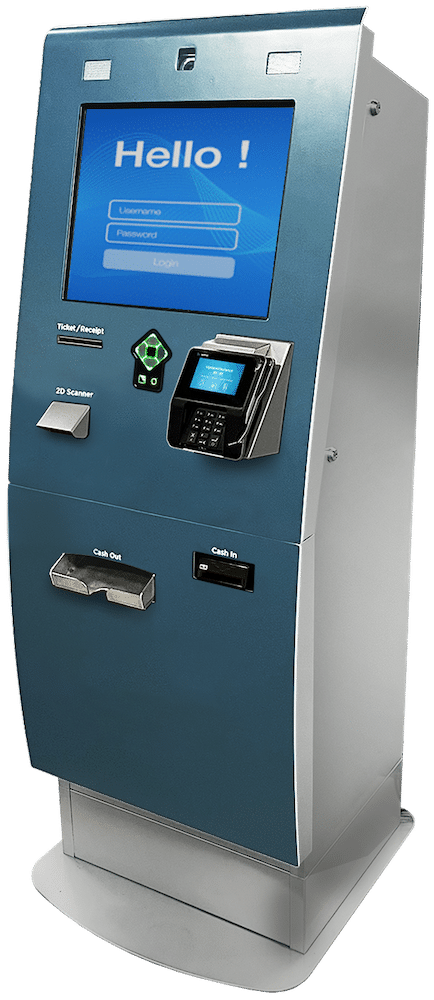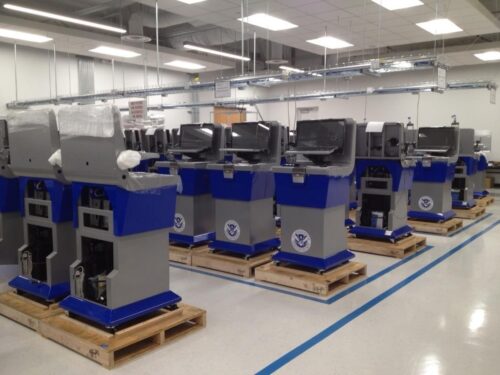As businesses continue their digital transformation and their expanded use of automation to address labor shortages and customer experiences, we see some new and growing trends in the self-service kiosk space.
In 2022, we saw extensive growth across the hospitality sector as they continued to roll out self-service kiosks. And much of this growth was to address post-pandemic labor shortages.
However, we are seeing growth in other areas as well as businesses look to automation to shore up operational costs and allow them to be more competitive in 2023 and 2024.
Self-service kiosks have seen several technology trends over the years. Recent trends that are most interesting include the following:
- Biometric Technology
- Artificial Intelligence and Machine Learning
- The Internet of Things (IoT)
- Mobile Integration
- Cloud Computing
1. Biometric Technology
Biometric technology is used in self-service kiosks for identity verification and authentication purposes.
While identification cards can be stolen, biometric devices use physical or behavioral characteristics such as fingerprints, iris scans, facial recognition, etc. to match the user with the data stored in the system.
This helps in ensuring secure access to the kiosk services and helps to prevent fraud and unauthorized access. Some common applications of biometric technology in self-service kiosks are for check-in, check-out, payment, and personal data access. Read this article to learn more about it.
2. Artificial Intelligence and Machine Learning
Self-service kiosks are using Artificial Intelligence (AI) and Machine Learning (ML) to provide personalization to improve the user experience. This personalization is intended to make the interaction with the kiosk more intuitive and customized.
AI and ML algorithms analyze user data and behavior, such as items purchased, time of day, and demographic information, to make real-time recommendations and provide a more personalized experience. For example, AI algorithms can provide customers with tailored menu options based on their previous purchases or dietary restrictions or display products that map to their preferences.
The kiosks can also use AI and ML to recognize individual customers based on facial recognition or other biometric data, and automatically display their preferred settings or previous transactions. This leads to a more efficient and enjoyable interaction, and it can increase customer satisfaction and loyalty.
3. The Internet of Things (IoT)
Self-service kiosks use IoT to connect to various devices, such as sensors and cameras, to collect data in real time.
This data is used to improve the functionality of the kiosk, such as detecting a person’s presence for automatic activation, tracking user behavior to improve the user interface, and monitoring system performance for maintenance purposes. The kiosk sends and receives data through the internet to a centralized database where it can be analyzed and used to make informed decisions to improve the overall user experience.
Read this article to learn more about the future of self-service kiosks.

4. Mobile Integration
Self-service kiosks are using mobile integration to enhance the customer experience by allowing customers to interact with kiosks using their mobile devices.
This includes the ability to use a mobile device as a remote control for the kiosk, such as to select items, make payments, and retrieve receipts.
Mobile integration also enables customers to receive push notifications, such as alerts for order status or promotions, and redeem coupons directly from their mobile device. This integration is made possible through the use of QR codes, NFC technology, or a mobile app that communicates with the kiosk over a secure network. Not only does this improve the overall convenience and speed of the transaction, it also provides businesses with valuable customer data for targeted marketing and analysis.
5. Cloud Computing
Self-service kiosks are using cloud computing to manage and update kiosks remotely and store and analyze customer data.
The kiosks are connected to a cloud-based platform that allows for remote management and software updates. This reduces the need for on-site maintenance.
Most software applications that are used on kiosks are cloud-based and also provide a centralized repository for storing and analyzing customer data, such as purchase history and demographic information. This data can then be analyzed and used to gain insights into customer behavior and preferences and inform business decisions such as inventory management and targeted marketing campaigns.
Another benefit of using cloud computing is that it provides scalability and redundancy, ensuring that the kiosk system remains secure and operational even in the event of a hardware failure or a network outage. This improves the reliability and efficiency of the kiosk system and provides a better overall user experience.
Technology-Enabled Self-Service Solutions
Developing high-valued self-service solutions takes a solid understanding of hardware, software and integrating the two to deliver a quality user experience. Olea Kiosks has been doing this for many years.
Its experience comes through in working with organizations like Homeland Security, CLEAR, Kaiser Permanente, and ACF Technologies.
As technology brings greater value, the team at Olea spends more time understanding the peripherals and devices that can enable these latest technology trends.
If you’d like to discuss a project that will be taking advantage of any of these advanced technologies, please contact us to help you redefine your business with self-service technology.


